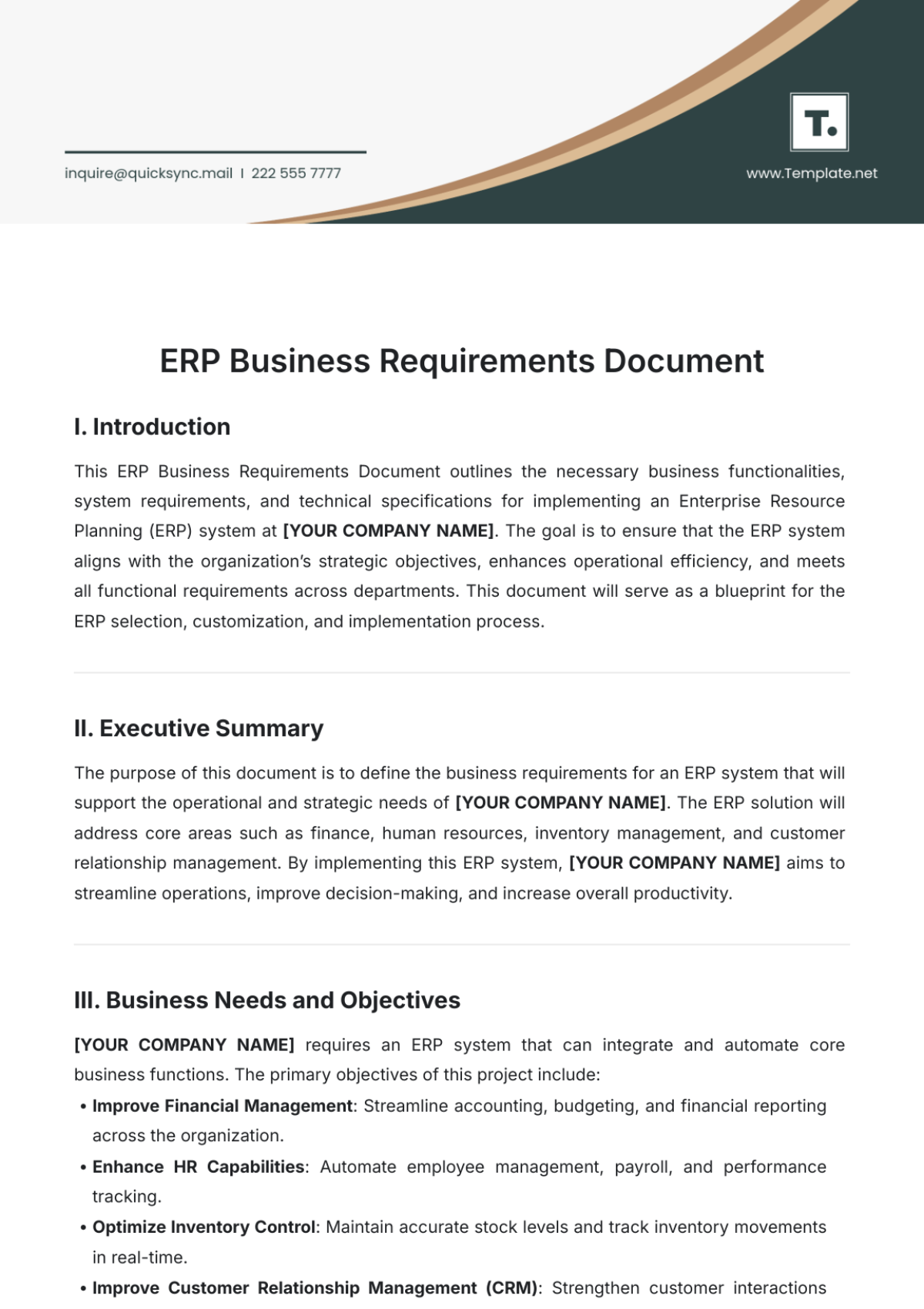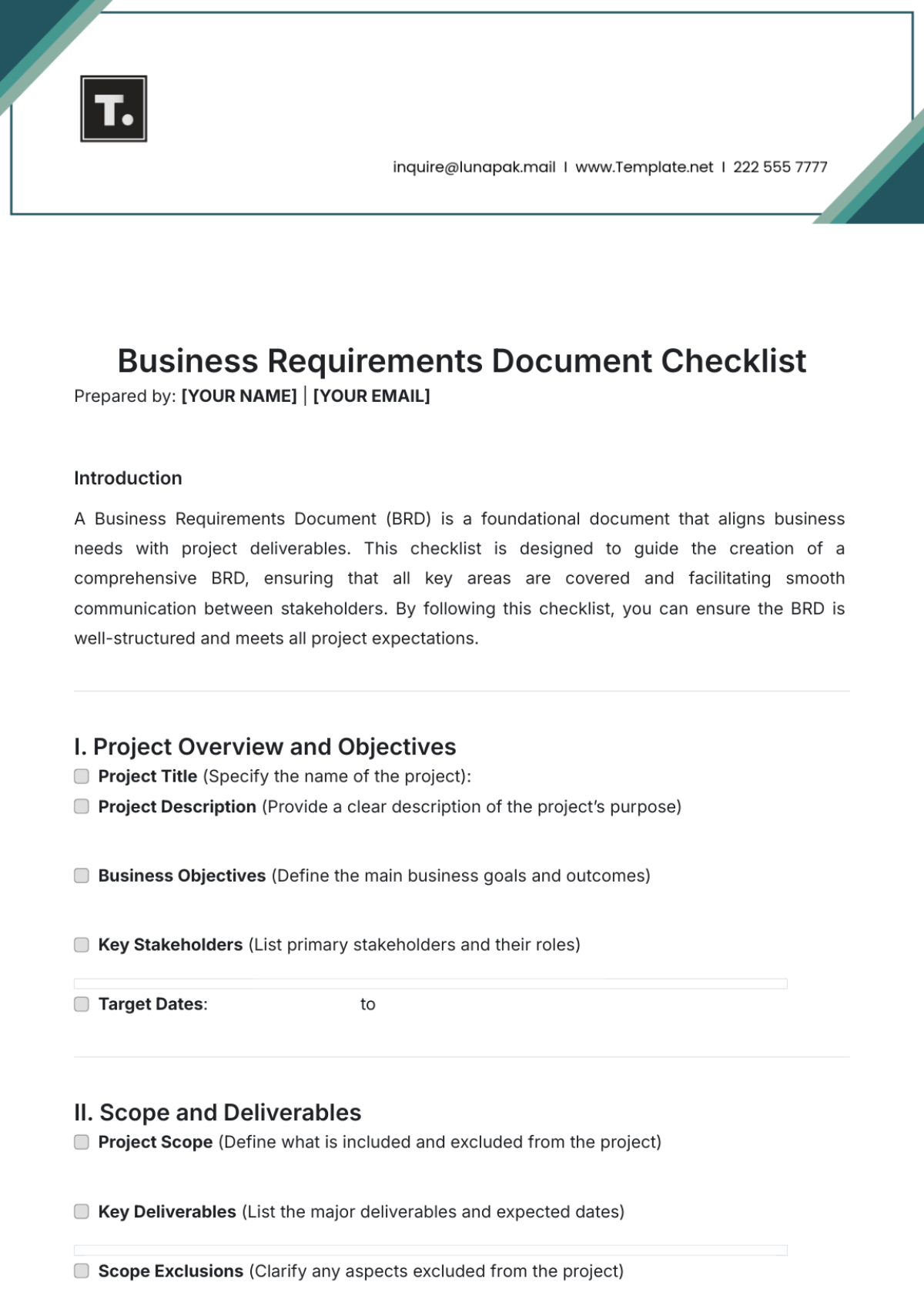API Business Requirements Document
Prepared by: [YOUR NAME]
Email: [YOUR EMAIL]
I. Introduction
The purpose of this document is to outline the business requirements for the development of the [YOUR COMPANY NAME] API, focusing on enhancing user experience, ensuring performance scalability, and maintaining strict compliance standards. The document will provide clear guidelines for technical and business teams to ensure that all needs are met for optimal integration and deployment.
II. Business Objectives
This section identifies the high-level business objectives that the API is designed to achieve. These objectives will guide the API’s functionality, integration, and performance.
Objective | Description | Priority | Deadline |
|---|---|---|---|
Improve Customer Experience | Ensure the API provides seamless data access for customers. | High | March 15, 2051 |
Enhance Internal Tools | Integrate API with internal tools to automate reporting and customer service workflows. | Medium | June 30, 2051 |
Ensure Data Security | Implement robust security measures to protect sensitive data. | High | September 20, 2051 |
Support External Integrations | Enable third-party partners to integrate with the API securely and efficiently. | Medium | December 15, 2051 |
III. Functional Requirements
The API should meet the following functional requirements to align with business needs.
User Authentication: The API must authenticate users securely using OAuth 2.0.
Data Retrieval: The API should support retrieving customer data with various filters (e.g., by date, by region).
Real-Time Processing: The API must support real-time data processing to ensure customers get timely information.
Logging and Auditing: The API must log all transactions for auditing and troubleshooting purposes.
IV. Non-Functional Requirements
This section outlines the non-functional requirements that ensure the API's performance and scalability meet the business objectives.
Performance: The API should handle up to 500,000 requests per day without performance degradation.
Scalability: The API must be designed to scale horizontally to accommodate future increases in traffic.
Security: It should use AES-256 encryption for all data transmission.
Availability: The API must be available 99.9% of the time, with planned downtime not exceeding 1 hour per month.
V. Stakeholders and Roles
The following table identifies the stakeholders and their roles in the development, implementation, and use of the API.
Stakeholder | Role | Responsibility | Contact |
|---|---|---|---|
Product Manager | Lead | Defines the business requirements and coordinates the project. | [YOUR NAME] |
API Development Team | Technical | Develops and tests the API. | kitty@you.mail |
Quality Assurance Team | Technical | Ensures the API meets functional and non-functional requirements. | adelia@you.mail |
Business Analysts | Business | Gather requirements and verify alignment with business goals. | allene@you.mail |
External Partners | End Users | Integrate their systems with the API. | amelia@you.mail |
VI. Success Criteria
The success of the API will be measured based on the following metrics:
Response Time: API response time should be under 200 milliseconds for 95% of requests.
User Satisfaction: Achieve at least 85% satisfaction from end users based on feedback surveys.
Security Compliance: Complete compliance with industry security standards (e.g., GDPR, HIPAA) by December 1, 2051.
VII. Use Cases
The following are the key use cases that the API will support:
Customer Data Access: Customers can use the API to access their personal data (e.g., order history, account details).
Internal Reporting Automation: Internal users will use the API to automate sales and performance reports.
Third-Party Integration: External partners will use the API to access specific product data for integration into their systems.
Real-Time Notifications: The API will push real-time notifications to users for account updates.
VIII. Conclusion
The [YOUR COMPANY NAME] API is designed to streamline business operations, improve customer satisfaction, and support external partners in a secure and scalable manner. With clear functional and non-functional requirements outlined in this document, the API will play a key role in achieving our strategic goals for 2050 and beyond.






































